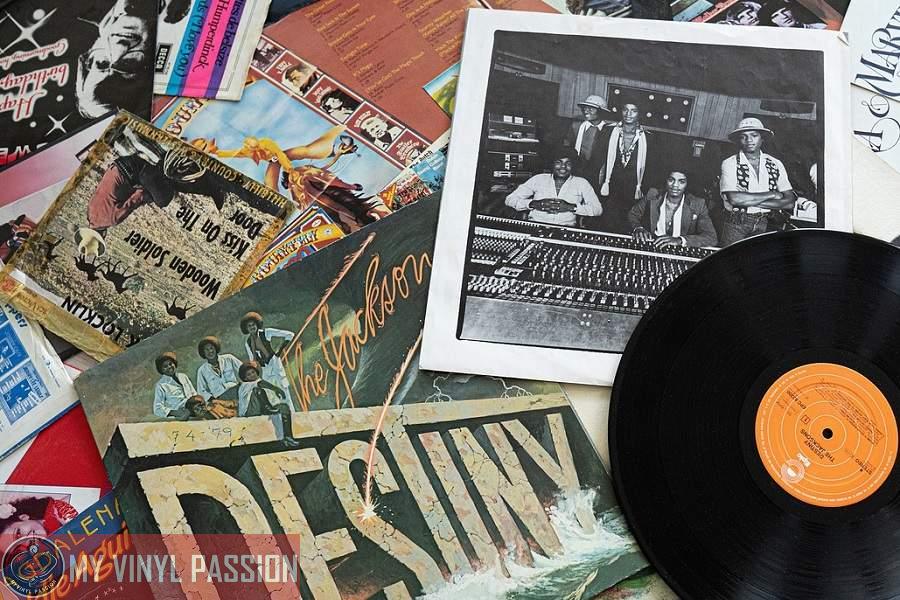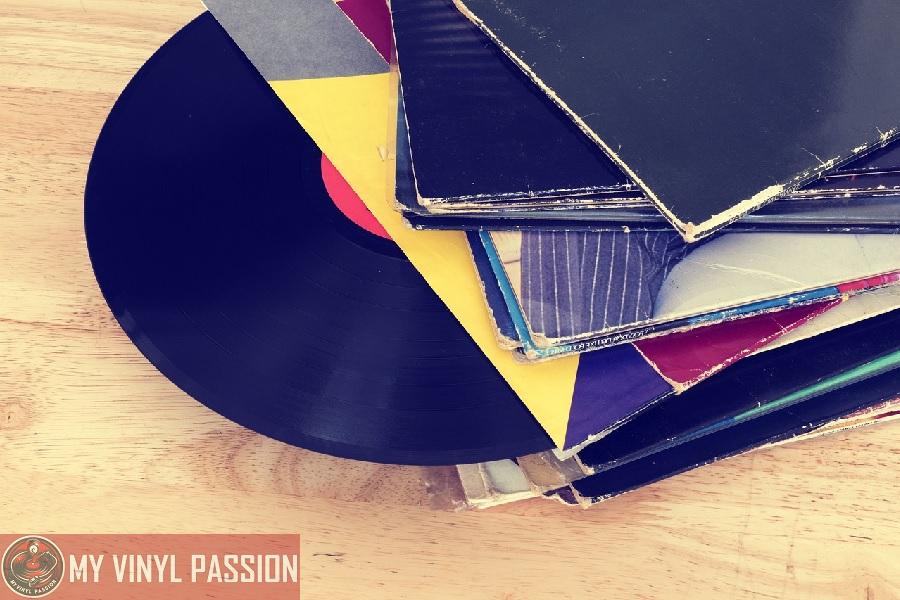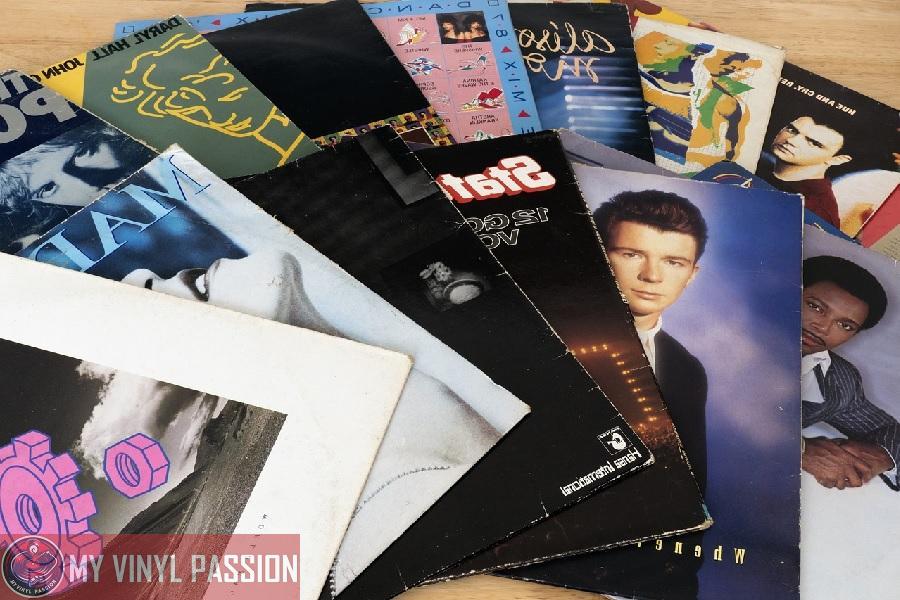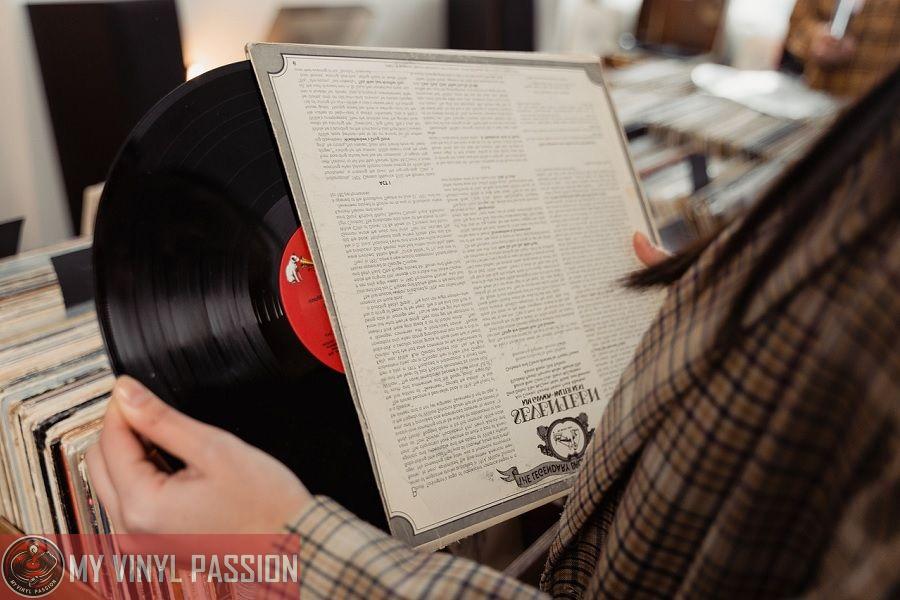When you think about vinyl records, one of their most distinctive features is the album cover.
The standard dimensions of a vinyl album cover have become an iconic part of music culture. Typically, these covers measure 12 inches by 12 inches, a square format that has provided a spacious canvas for artists to create memorable and often groundbreaking artwork.
In Summary
Standard Size: The typical size for a vinyl album cover is 12.375 inches square (31.43 cm), designed to fit standard 12-inch LP records.
Thickness Variation: The thickness of an album cover can vary, but it generally ranges from 1/16 inch (1.6 mm) to 1/8 inch (3.2 mm), depending on the quality and type of material used.
Gatefold Covers: Gatefold covers, which open like a book to reveal additional artwork or information, are usually the same height and width but double the length when fully opened.
Inner Sleeves and Inserts: Inner sleeves that hold the actual record are slightly smaller, typically around 12 inches square, and may include additional inserts like lyrics sheets or posters, which conform to the cover size.
The size of the cover not only perfectly fits the vinyl record it houses but also offers an impactful visual experience.
Holding a vinyl album cover in your hands, you engage with the artwork in a way that’s more tangible compared to the digital thumbnails used in music streaming services today. The physicality of the cover adds a sensory layer to the musical experience, making it an integral part of the vinyl record’s charm.
Understanding the dimensions of a vinyl album cover is crucial whether you’re a collector, a musician, or a designer looking to create artwork for a vinyl release.
These dimensions are not only about the cover size but also about preserving the rich heritage of album design that has been celebrated for decades.
The large format allows for creative expression and serves as a visual entry point to the music, beckoning listeners into the auditory world crafted by the artist.
Historical Context
Your vinyl LP is more than just a medium for music; it’s a snapshot of a journey echoing through time. In its cover, you find a blend of art, culture, and history.
Evolution of Album Covers
The album cover, originally serving as a simple protective sleeve for your LP, has undergone significant transformations.
In the mid-20th century, covers were mere paper envelopes, sometimes featuring only basic text. The idea of the album cover as an art form blossomed with the advent of the 12-inch LP in the 1940s, offering a larger canvas that invited artistic expression and branding.
By the 1960s and 1970s, iconography on covers like the Beatles’ “Sgt. Pepper’s Lonely Hearts Club Band” became deeply intertwined with the music itself.
Influence on Music Culture
Album covers quickly grew to be integral in shaping music culture. Alongside the auditory experience of a turntable or a record player, the tactile and visual dimensions of vinyl record covers gave fans a fuller experience. Record collectors often seek out vinyl LPs for their artistic sleeves as much as for the music within.
The cover art became a canvas for cultural statements, branding bands and artists with imagery as memorable and influential as the melodies they housed. This fusion of art and music bolstered vinyl’s reputation, establishing records as collectible artifacts beyond their sonic value.
Physical Dimensions
When you shop for vinyl records, understanding the physical dimensions of album covers is key because they’re designed to fit various vinyl record sizes, including 12-inch, 10-inch, and 7-inch records.
Standard Sizes
12-inch Records: The most common album cover size you’ll encounter is 12.375 inches square for a 12-inch record. The standard outer sleeve is 12.75 inches to ensure a proper fit with a little extra space to protect the record.
- Gatefold Covers: Some 12-inch records come in gatefold covers, which unfold to reveal a double-width 24.75-inch span when opened. This allows for additional artwork and information.
10-inch Records: For 10-inch vinyl records, the covers are slightly smaller, typically around 10.25 inches square. These covers snugly house the record and offer similar artwork and design space proportionate to their dimensions.
7-inch Records: The smallest standard size for vinyl is the 7-inch record, and its covers usually measure 7.25 inches square. This size is often used for singles and EPS.
Special Formats
In addition to the standard sizes, you may discover special format vinyl album covers crafted for unique releases or limited editions.
These can include die-cut sleeves, unusually shaped covers, or larger covers with extended artwork. While these special formats deviate from the typical dimensions, they still cater to the size of the vinyl record inside, ensuring the protection and proper fit of the media.
| Record Size | Cover Dimensions | Additional Notes |
| 12-inch LP | 12.375 inches (31.43 cm) square | Standard size for full-length albums; spine width approximately 0.25 inches (0.64 cm). |
| 10-inch | 10.125 inches (25.7 cm) square | Less common, used for EPs or shorter albums. |
| 7-inch EP | 7.08 inches (18 cm) square | Typically used for singles or short recordings. |
Design and Artwork
When it comes to the creation of vinyl album covers, two key elements are central: artwork creation and color models / print quality. Each aspect plays a crucial role in how your album is perceived and the ultimate impact it has on the listener.
Artwork Creation
Your album artwork is more than just a visual element; it sets the tone for the music contained within. Professional graphic designers or illustrators often use tools like Adobe Photoshop or Illustrator to craft custom album cover art.
The process involves an art director and a graphic designer working in tandem to translate a musical idea into a compelling visual experience.
The dimensions of a vinyl record album cover play a significant role, typically measuring 12.375 inches square for a standard LP. Within this space, every inch is thoughtfully utilized to communicate the artist’s vision and the genre’s essence.
Color Models and Print Quality
The choice between RGB and CMYK color models is critical for your album’s visual fidelity. RGB, best for digital screens, is not suitable for printed materials like your cover art.
Instead, graphic designers opt for CMYK for physical print to ensure the colors in your custom album cover appear vibrant and true to design. When preparing your artwork for print, be sure to use high-resolution images, generally at least 300 dpi (dots per inch), to avoid any loss in quality.
Print quality directly affects the audience’s perception, and attention to detail during this stage will reflect in the final product that reaches your audience.
Material and Durability
When you’re considering the longevity of your vinyl album collection, the material and durability of the album covers are as crucial as the records themselves. They protect the music you cherish and add to the overall aesthetic appeal.
Common Materials
Cardboard and paperboard are the primary materials used for vinyl album covers. Cardboard provides a sturdy casing for the record, while paperboard offers a balance between protection and pliability. Most standard covers are printed on a type of paperboard that’s coated to resist moisture and wear.
- Gatefold album covers are usually crafted from thicker cardboard because they unfold like a book, providing a larger canvas for artwork and information.
- The outer record sleeves may be made from various materials, including polyethylene, to give an additional layer of protection against dust and scratches.
Protecting Album Covers
To maintain the integrity of your vinyl album covers, consider the following protective measures:
- Store your vinyl in a cool, dry place away from direct sunlight to prevent warping and fading.
- Keep the records in their sleeves and the sleeves inside the album cover to reduce exposure to dust, which can lead to scratching.
- Use plastic outer sleeves to shield the entire album from spills and scuffs.
Remember, the durability of your album cover not only preserves the visual and tactile experience of your vinyl but also adds to its long-term value.
Modern Adaptations
Vinyl album covers have evolved beyond their original purpose, now serving both nostalgic and contemporary needs. In today’s digital age, these iconic visuals have been adapted into new formats and are displayed with innovation.
Digital Formats
Your vinyl record’s artwork can come to life in the digital realm. With streaming services like Spotify and iTunes, you have the option to view digital album covers that replicate the visual experience of physical records.
These platforms ensure that the art of the album is preserved and accessible, even when you’re listening on the go. Digitization has allowed for the rich history and aesthetic captured on vinyl covers to thrive in a modern setting, bridging the gap between past and present listening experiences.
Display and Storage Solutions
When it comes to your physical collection, innovative vinyl record storage solutions have emerged. For those who want to showcase their favorite albums as art, picture frames for vinyl records are a stylish option. They not only protect your cherished record albums but also celebrate their artwork as a focal point in your space.
- Wall-mounted shelves or cubes are practical and make for an attractive display.
- Customizable storage units can fit specific dimensions, catering to both single and gatefold covers.
It’s your passion for music that turns these utilitarian solutions into a full-fledged display of your musical taste. Whether through sleek frames or detailed storage furniture, your vinyl covers are both protected and celebrated.
When it comes to vinyl album covers, you may have questions about the right size for your collection and how to maintain them properly. The following subsections address your common concerns.
Common Sizing Concerns
Recommended Album Cover Size:
Typically, your vinyl album covers should be 12.375 inches square. This size is standard for LP (long play) records, providing a snug fit that protects the record inside.
Variations in Album Cover Sizes:
While 12.375 inches is the norm, some album covers may vary slightly in size because of production differences or special editions. Always check the specifications if you’re purchasing sleeve covers or record storage solutions to ensure a good fit.
Maintenance and Care
Cleaning Your Album Covers:
To keep your album covers in top condition, gently wipe them with a soft, dry cloth. If necessary, use a slightly damp cloth for more stubborn dirt, but avoid moisture near the openings to protect the vinyl inside.
Storing Your Vinyl Records:
Store your vinyl records vertically to prevent warping, and keep them away from direct sunlight and heat sources. Ensure your record storage shelves are sturdy and large enough to prevent the album covers from bending.
FAQs
What is the standard size of a vinyl album cover?
The standard size for most vinyl album covers is 12.375 inches square (31.43 cm), designed to accommodate standard 12-inch LP records.
Do vinyl album covers come in different thicknesses?
Yes, the thickness of vinyl album covers can vary, typically ranging from 1/16 inch (1.6 mm) to 1/8 inch (3.2 mm), depending on the material quality and the type of album.
What are gatefold covers and how do their dimensions differ?
Gatefold covers are a type of album cover that opens like a book, revealing additional artwork or information. While the height and width remain the same as standard covers, they are double the length when fully opened.
Are the inner sleeves the same size as the album cover?
Inner sleeves, which hold the vinyl record, are slightly smaller than the album cover, usually around 12 inches square, to fit snugly inside the cover.
Can album covers include additional items like posters or lyric sheets?
Yes, many vinyl albums include additional inserts such as posters, lyric sheets, or booklets. These are typically designed to fit within the standard album cover dimensions for easy storage.





